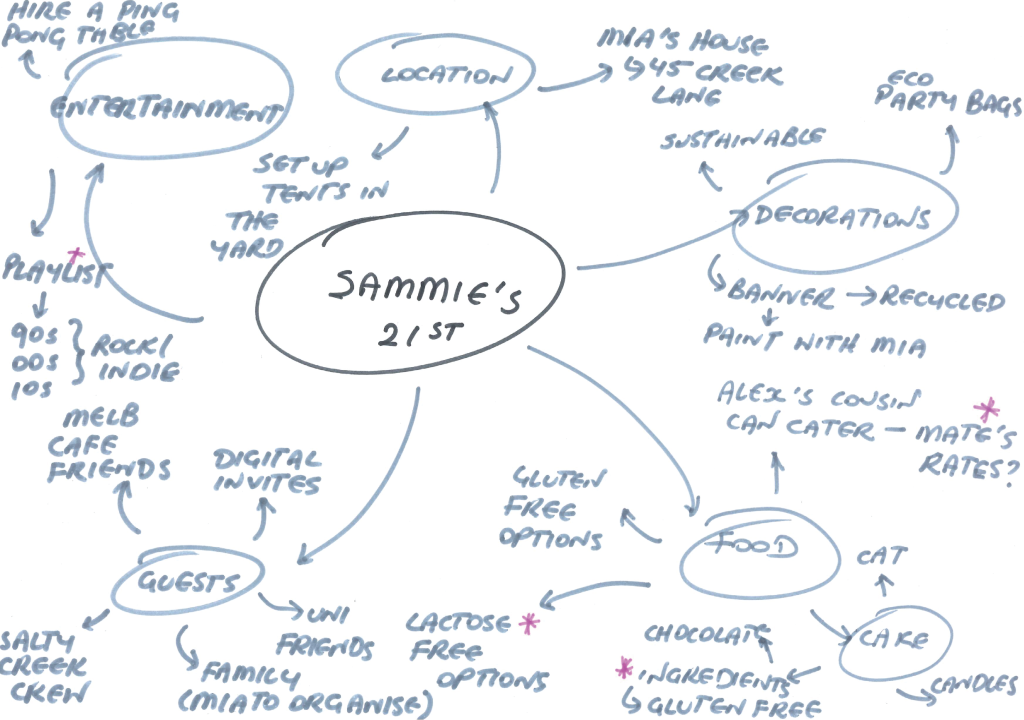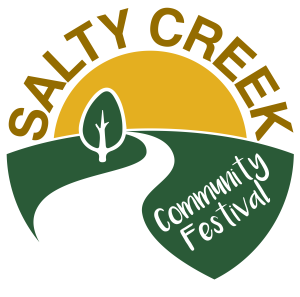Mind mapping an artist statement
Sometimes it’s hard to see the big picture and start writing something. Learn why Hayden is a fan of mind mapping…
![]()

Working with her hands and making art comes naturally to Afra, the artist who has made the Salty Creek Community Festival’s central art installation, but she’s not so confident writing about her work. In fact, she’s pretty stressed out about writing an artist statement. She doesn’t know how to structure her thoughts and start writing, so she has emailed festival organiser Hayden to ask for his help. He suggests creating a mind map to help her see the big picture.
Read Hayden’s email to Afra and check out the resources he has sent her.
Hi Afra,
I know how you feel. In my first year of uni, I struggled with essays and presentations. I’d sit down to do a task and not know where to start. One of my teachers suggested I try mind mapping. You may have seen one before – it’s a way of visually representing information and connecting ideas.
I took my teacher’s advice and made a mind map for a product proposal I was writing for my course, and it worked! I was able to group my ideas and figure out the best structure for the task. I tried the same strategy in all my units and found that mind maps can be used for pretty much anything that requires you to organise your thoughts. I even use them for everyday life things like planning social events, my budget, and my personal goals.
I’ve seen some people online who spend a lot of time making impressive digital mind maps, but just writing stuff down with a pen and paper works for me.
I reckon you’d find creating a mind map helpful. Why don’t you have a go at making one for your artist statement? Bring it along next week and we can talk about it in more detail. This video tutorial on mind mapping will help you get the hang of it.
Cheers,
Hayden
P.S – It doesn’t need to be fancy or time consuming unless you want it to be – check out this mind map I made when I was planning Sammie’s 21st birthday party.

Afra has completed her mind map after looking at the information Hayden sent her. Now that her notes are visually displayed, she can see links between them and is starting to get a better idea of how she’ll structure her artist statement.
Use the slider to move between the images showing each stage of Afra’s mind map creation.
Afra has discovered a new method for organising her thoughts and plans and is now well on her way to putting together her artist statement. She’ll be able to use this skill when she begins studying, as well as in her day-to-day life. In fact, she’s already started making mind maps to help her research uni courses, plan a holiday to Queensland, and record ideas for her next artwork – the possibilities are endless!

- Now that Afra has made her mind map, her next step is to order the information and start writing a draft. Check out the Writing an artist statement page in the Volunteers and Contributors series to see how Afra’s statement progresses. (10 to 15 minutes)
Learn more on Learning Lab
- Grab a pen and paper, or use a digital mind mapping tool, and follow the tutorial on how to mind map your own artist statement. (20 minutes)
- Mind mapping is a great method for all kinds of writing tasks. Check out how it can be used to plan an essay. (8 minutes)

